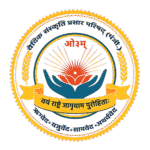Long before modern classrooms and digital learning, India had the Gurukul system — an ancient, time-tested tradition of holistic education that emphasized character, discipline, and wisdom over rote memorization.
🏡 What is the Gurukul System?
A Gurukul was a residential school run by a guru (teacher) where students, or shishyas, lived and learned together. These were often located in serene natural settings, far from urban distractions, creating an environment ideal for focused learning.
📚 What Was Taught?
The curriculum went far beyond academics. While students learned subjects like Sanskrit, mathematics, astronomy, logic, medicine (Ayurveda), and philosophy, they were also trained in:
- Ethics and Dharma
- Physical education and self-discipline
- Arts and crafts
- Practical life skills (including farming, cooking, and household duties)
🙇♂️ Teacher-Student Bond
The relationship between the guru and shishya was deeply respectful and personal. Students served their guru, and in return, the guru passed on not just knowledge, but life wisdom.
🧠 Focus on Character Building
Unlike today’s exam-centric systems, Gurukuls focused on building strong moral character, humility, gratitude, and self-reliance. Education was seen as a sacred journey, not a race for grades.
🌏 Why It Still Matters
In a world flooded with information but starved of wisdom, the Gurukul system reminds us of the true purpose of education: not just to earn a living, but to live a meaningful life.
✨ The Gurukul system wasn’t just about learning — it was about becoming.
Let’s take inspiration from it as we rethink education for the future.
#GurukulSystem #AncientIndia #HolisticEducation #IndianHeritage #EducationMatters #WisdomOverGrades
